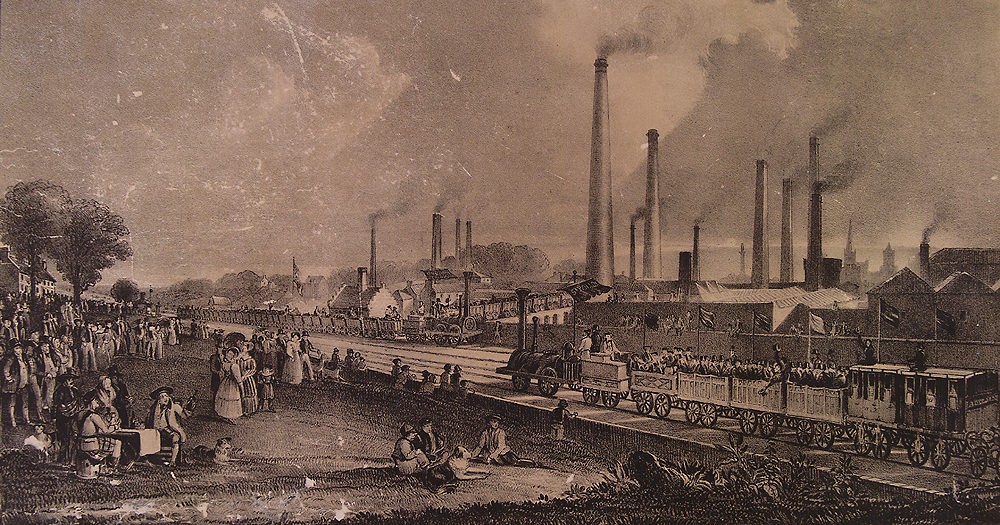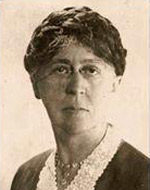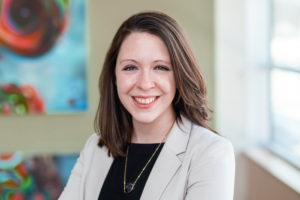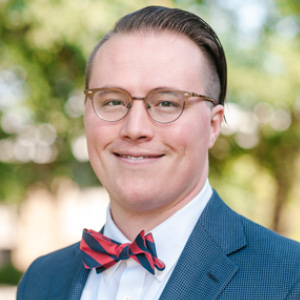Meet the Woman Whose Creative Experience Provided the Germ for Organizational Learning


This spring’s issue of The Foundation Review (Vol. 11, Issue 1) focused on learning in foundations and the value of nurturing learning cultures within philanthropic organizations.
In the opening editorial, Johnson Center Executive Director Teri Behrens writes,
“While foundation staff need a theory to guide action, they must also be willing to deviate from the plan when there is evidence that it isn’t working or when a better way emerges. … The shift from the foundation as expert to foundation staff as learners is the first step toward developing a deep learning practice that can foster deeper impact and relevancy” (p. 2).
The same can really be said for nonprofit practitioners. As sector leaders seek to build adaptive organizations with demonstrable impact, they would do well to invest in their teams’ capacity to absorb and respond to new information.
As this issue of The Foundation Review demonstrates, organizational learning is gaining ground as a workplace priority in philanthropy. Funders, nonprofits, and communities are spurred on by the urgency of society’s most pressing issues (Dorothy A. Johnson Center for Philanthropy, 2019). But where did this concept come from?
While many (rightly) point to Peter Senge’s book The Fifth Discipline (1990) as the seminal work that brought organizational learning to the mainstream of management thought and practice, it is a brilliant woman’s work published nearly 70 years prior that provided the germ.

Before traveling back through history, it will be valuable to first define a few key terms.
According to Senge (1990), organizational learning is the “continuously expanding…capacity to create [the] future” (p. 3). David A. Garvin (2008), writing for the Harvard Business Review, reins in that inspiring but admittedly nebulous definition a bit by defining organizational learning as “creating, acquiring, and transferring knowledge, [then] modifying behavior to reflect new knowledge and insights” (para. 2).
“[W]e define organizational learning as the continuous creation and communication of knowledge that spurs action.”
For the purpose of this article, we define organizational learning as the continuous creation and communication of knowledge that spurs action. This definition effectively combines the concise but also more concrete elements of the two prior definitions.
Mark Twain once said that history may not repeat itself, “but it sometimes rhymes” (Wren & Bedeian, 2009, p. 5). One sees that rhythm when viewing the history of management theory and practices, particularly in the last two centuries (early 1800s to present). It is in these rhythms that the organizational learning movement was born.
After the Industrial Revolution spread to the United States from the seedbeds of Britain and France (Wren & Bedeian, 2009) around the mid-1800s, the explosive expansion of industrial production demanded better, more organized organizations. Frederick Winslow Taylor (1856–1915) and other (arguably lesser) founders of scientific management, sought to form control and efficiency out of the chaos of the embryonic factory system (Wren & Bedeian, 2009, p. 121–122).

After World War I devastated Europe, the United States emerged as a powerhouse of industrial and human capacity. The “social gospel” replaced Taylor’s “gospel of efficiency” and restored interest in human relationships (Wren & Bedeian, 2009, p. 405).
World War II became a second flashpoint; the modern era of management emerged out of the “confusion, trauma, and diversity” that marked the middle of the 20th century (Wren & Bedeian, 2009, p. 405). The rapid rebuilding and modernization of Europe, China, and Japan sparked a renewed interest in systematic management that could integrate the person within the organization and society more broadly.
Institutionalized philanthropy shares a parallel history. The Industrial Revolution and the vast inequities of the Gilded Age spurred charitable associations and organizations to take “a more systematic approach to the work of improving social conditions, and [to adopt] management methods that were gaining a following in the business world” (Philanthropy New York, 2008, para. 4). Pioneering philanthropists like Andrew Carnegie and John D. Rockefeller poured their monumental wealth into private foundations in the early 1900s and hired staff to design and run their operations.
Systems and science experienced a resurgence in management theory near the turn of the 21st century as computer technology allowed for not only new production methods but also advanced information systems (Wren & Bedeian, 2009, p. 487). The digital hand, guided by an exponentially growing set of data, continues to prove to be a difficult beast for the modern manager to tame. And all the while, people remain a central concern for all organizations; Chris Argyris reminds us that each individual member of an organization is a carrier and user of knowledge (Crainer, 2003, p. 10).
Organizational learning emerged from the melding of both “soft” (psychology, sociology, anthropology, etc.) and “hard” sciences (mathematics, engineering, biology, etc.) in management thought.
Later championed by Peter Senge, the formal conception of organizational learning occurred in mid-20th century America, “pioneered” by Chris Argyris (1923–2013) and his longtime collaborator, Don Schön (1930–1997) (Wren & Bedeian, 2009, p. 441). Argyris and Schön published Organizational Learning: A Theory of Action Perspective in 1978, offering the first formal definition of the concept and hypothesizing about the reasons why organizations struggled to adopt learning outlooks. Senge (1990) later articulated Argyris’ thoughts on the problem well:
“[M]ost managers find collective inquiry inherently threatening…When was the last time someone was rewarded in your organization for raising difficult questions…rather than solving urgent problems? Even if we feel uncertain or ignorant, we learn to protect ourselves from the pain of appearing uncertain or ignorant. That very process blocks out any new understandings which might threaten us. The consequence is what Argyris calls ‘skilled incompetence’ — teams full of people who are incredibly proficient at keeping themselves from learning.” (p. 25)
However, Argyris, Schön, and Senge failed to realize that someone else had already tackled this problem and identified a solution. Before either Argyris or Schön was born, Mary Parker Follett had theorized the solution to the problem of skilled incompetence in a single word: integration.
Mary Parker Follett was born September 3, 1868, in Quincy, Massachusetts (Encyclopædia Britannica, 2018). Before graduating in 1898 from what would later become Radcliffe College in Boston, Follett had already taught professionally and published her first book (Encyclopædia Britannica, 2018). As a local activist and leader, Follett pioneered afterschool programs throughout Boston and fought for minimum wage (Encyclopædia Britannica, 2018). Her brilliance as a lecturer took her as far as the London School of Economics. Before her death in 1933, she published two more books and numerous papers (Encyclopædia Britannica, 2018). One of those books was Creative Experience.
For Follett (1924), integration was required for the experience to “yield up for us its riches” in the form of learning or knowledge creation (p. xi). The integration of subject and object, individual and environment, and temporal and transcendent were key. For organizational learning to take place, we must record and share in our own intentional, iterative experiments our successes and failures as “participant-observers” (Follett, 1924, p. 178). This ongoing, collective effort produces the rich fruit of organizational learning.
“For organizational learning to take place, we must record and share in our own intentional, iterative experiments our successes and failures as ‘participant-observers.’ This ongoing, collective effort produces the rich fruit of organizational learning.”
Follett’s treatise is a “key predecessor of more recent interest in learning organizations” (Smith, 2002, para. 14). In their exploration of the science behind administration, Briner and Campbell (1964) connect Follett’s “attempted” synthesis of multi-dimensional human behavior and the organization (integration) to the “achieved” synthesis in Bakke and Argyris’ fusion process model (p. 5). It was this model that ultimately offered a solution to Maxwell’s (1964) “fusion theory” — the basic conflict between the individual and organization in which each is constantly demanding that the other adapt — which Follett’s integration alone did not resolve (p. 67). Along with Chester Barnard, Follett formed the intellectual bridge between scientific management and the social person eras (Wren & Debeian, 2009, p. 331). Follett’s work helped make it possible for individuals and organizations (or organizational representatives) to find a greater balance in their inherent game of tug-of-war. Whether we realize it or not, we owe a great deal to Mary Parker Follett.
While the history of organizational learning undoubtedly resembles a branching root structure, Mary Parker Follett emerges as a central trunk supporting the entire structure (Smith, 2002). Through his own teaching and writings, Peter Drucker christened Follett a ‘Prophet of Management’ (Smith, 2002, para. 15) and helped bring due credit to the long-overlooked work of a woman whose significance and originality cannot be overstated (Wren & Debeian, 2009, p. 322).
“Often disruptive, the creative experience — thoughtfully, purposefully engaged — leads to sustainable organizational learning.”
Often disruptive, the creative experience — thoughtfully, purposefully engaged — leads to sustainable organizational learning. Anthony J. Dibella (2011) notably asserts that all organizations are learning and the rub comes in doing it well by managing the investment, pace, and leverage of learning. Nearly a century ago, Follett offered us this advice: become the expert of your own experience to create a better future for all. Leaders in the philanthropic space should empower everyone in their organization to do just that for the sake of learning.


Briner, C., & Campbell, R. (1964). The science of administration. Review of Educational Research, 34(4), 485–492.
Crainer, S. (2003). The ultimate business library: The greatest books that made management. London, England: Capstone.
Dibella, A. (2011). Learning portfolios: An alternative to Learning Organizations. In M. Easterby-Smith & M. A Lyles (Eds.), Handbook of organizational learning and knowledge management (pp. 183-196). Wiley.
Dorothy A. Johnson Center for Philanthropy. (2019). 11 Trends in Philanthropy for 2019. Retrieved from https://johnsoncenter.org/trends
Follett, M. (1924). Creative experience. New York, NY: Longmans, Green.
Garvin, D. A., Edmonson, A. C., & Gino, F. (2008, March). Is yours a learning organization? Harvard Business Review. Retrieved from https://hbr.org/2008/03/is-yours-a-learning-organization
Mary Parker Follett. (2018). In Encyclopædia Britannica. Retrieved from https://www.britannica.com/biography/Mary-Parker-Follett
Maxwell, S. (1964, Spring). Two contributions to management theory. Industrial Management Review 5(2), 67–85.
Philanthropy New York. (2008). History of U.S. Philanthropy. Retrieved from https://philanthropynewyork.org/sites/default/files/resources/History%20of%20Philanthropy.pdf
Senge, P. M. (1990). The fifth discipline: The art and practice of the learning organization. New York, NY: Doubleday.
Smith, M. K. (2002). Mary Parker Follett: Community, creative experience and education. The Encyclopedia of Informal Education. Retrieved from http://infed.org/mobi/mary-parker-follett-community-creative-experience-and-education/
White, A. (2017). Tax Reform Act of 1969. Retrieved from https://www.learningtogive.org/resources/tax-reform-act-1969
Wren, D., & Bedeian, A. (2009). The evolution of management thought (6th ed.). Hoboken, NJ: Wiley.